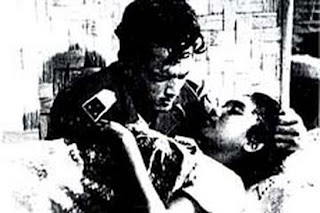 Main
Mahaputra Star recipient of this government is the founder and first
dean of the Faculty of Social Sciences (now FISIP-UI) and to the end
with the faithful became professor of sociology at the Faculty of Law
University of Indonesia (UI).
Main
Mahaputra Star recipient of this government is the founder and first
dean of the Faculty of Social Sciences (now FISIP-UI) and to the end
with the faithful became professor of sociology at the Faculty of Law
University of Indonesia (UI).He is known to be very disciplined and always give a concrete example. He left many scientists that science supplies. Actually, he was purnatugas at the University of Indonesia (UI). But, because it is still needed, he still taught in high spirits. He was a figure of integrity, have a high social commitment and hard to be quiet.
He is the person who is not bossy, but set an example. His life straight, clean, and simple. He ruled with exemplary character, as revealed by successful entrepreneurs Soedarpo Sastrosatomo. According Soedarpo, it also makes the integrity of the late Sultan Hamengkubuwono IX ordered his son, lane X to always listen and ask the advice of Selo when it comes to social issues. He is the person who never stops thinking and acting.
He was one of the few people who make it worth calling to stop the practice of corruption, collusion and nepotism (KKN). Deserved because he was not the type of pot calling the kettle. He is a clean person with the knowledge and exemplary practices can be demonstrated that corruption undermines the social order. He deserves to be an example of the bureaucracy as a high work ethic in serving the community.
During his lifetime, had a career as a civil Selo Empire / Government of the Special Region of Yogyakarta, Military Chief of Staff of the Civil Governor of Gujarat, Secretariat Chief of Staff and the Security Cabinet of Prime Minister, Head of the Secretariat of State III and concurrently Secretary General Supreme Audit Board, the Vice President Sultan Hamengku Lane IX (1973-1978), Assistant Vice President of Public Welfare Affairs (1978-1983) and an expert staff of President Soeharto.
He is known as the Father of Sociology of Indonesia after 1959 - after earned his doctorate at Cornell University, U.S. - taught sociology at the University of Indonesia (UI). He is the founder and first dean (10 years) Faculty of Social Sciences (now FISIP) UI. Then on August 17, 1994, he received the Star of Main Mahaputra government and on August 30, earned his sociology major scientist.
This UI FISIP founder, earned a UI professor of the Faculty of Economics and until the end of his life teaching at the Faculty of Law precisely UI.
He grew up in the Sultanate of Yogyakarta Sultanate courtiers. His grandfather, Prince Charming Kanjeng Padmonegoro, is a high official in the office of Yogyakarta Sultanate. Thanks to his grandfather, Soemardjan-so-original name of the Dutch education received.
Selo name he earned after a subdistrict in the district Kulonprogo. This is a special way the official name of the Sultan of Yogyakarta differentiate according to their respective regions. When he feels this is the district head office started his career as a sociologist. "I was the district head of the Dutch colonial experience, the inclusion of Japan, followed by a time of revolution. Problem a lot," he said at one time as written Compass.
His experience as a researcher camat make Selo capable of offering alternative solutions to social problems is telling. This is also what distinguishes Selo with other researchers.
The late Baharuddin Lopa in one of his writings in the Compass (1993) writes, "Mr. Selo dug directly from real-life science. Once processed, he was delivered back to the community to be utilized for the common welfare." Lopa judge Selo as a teacher to encourage students to think realistically and understand and appreciate what he preaches. "Realistic approach and went downstairs to find out the real social situation is well exemplified by the prophets and the caliph," wrote Lopa.
Although better known as a great teacher, Selo, far from being the person who likes to "frown". In a family environment and the campus, she is known for being rich and playful imagination, especially for the lead in terms of students he taught science. "I explained economics easy to understand because it is always accompanied by examples taken from real life people," recalls Baharuddin Lopa.
In this paper Lopa, Selo is also described as a hilarious speech, but easy to understand because the language of the people. Although his words contain criticism, because with humor, people are not strained to hear.
According to his eldest son, Hastjarjo, Selo liked to play. "Every day has always played his gymnastic exercise. Impressed funny, grandchildren think you're playing around with her body," he added.
As a scientist, who has published works Selo is Social Changes in Jogjakarta (1962) and Movement May 10, 1963 in Sukabumi (1963). Recent study titled Decentralized Governance Selo. He received the Award last lane (HB) IX from the University of Gadjah Mada (UGM) on top of the Anniversary The UGM-52 dated January 19, 2002 in the form of a charter, badges, and some money.
from : http://id.wikipedia.org/wiki/Selo_Soemardjan
